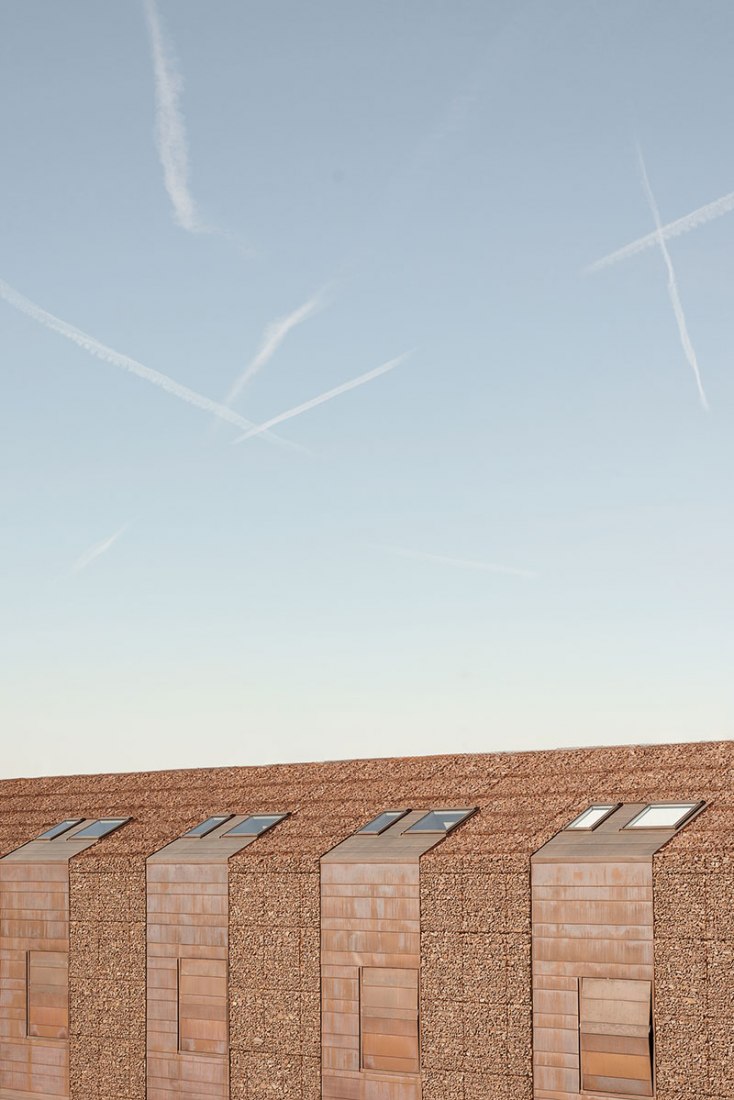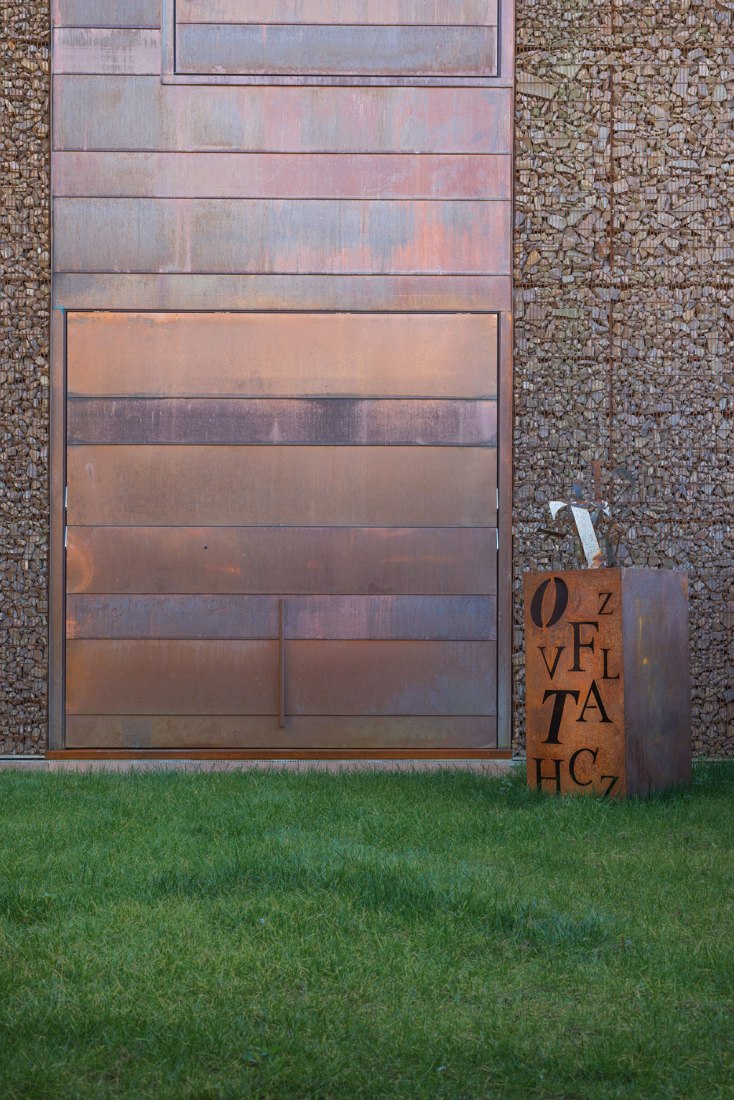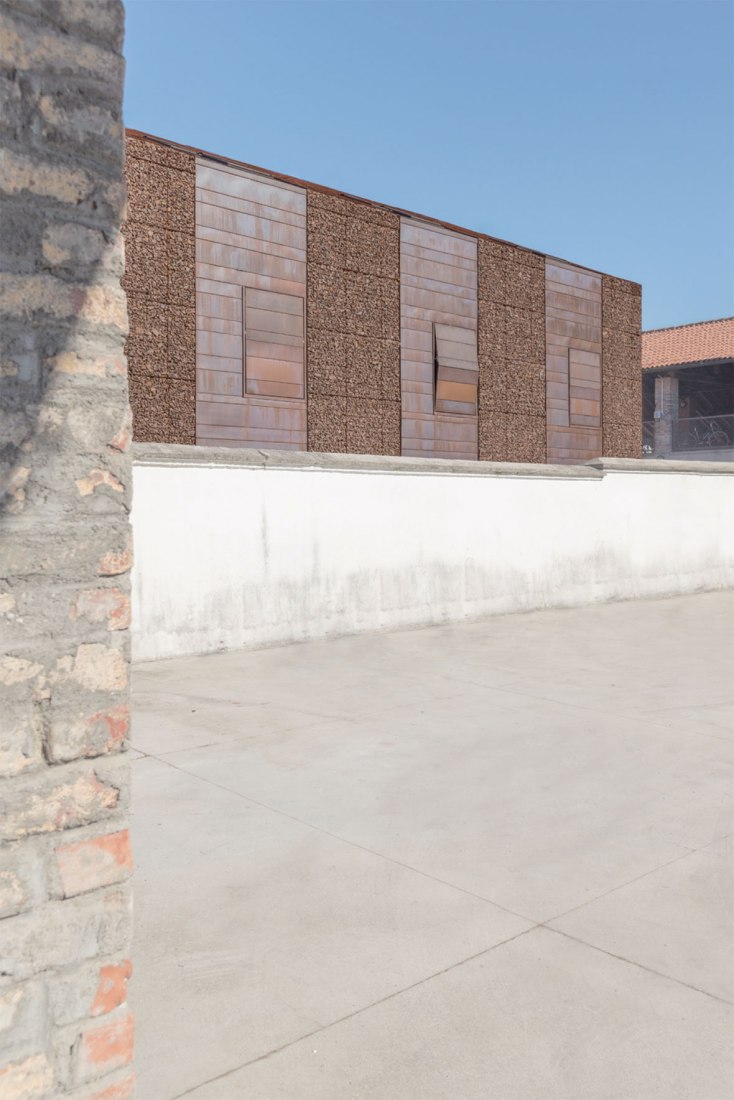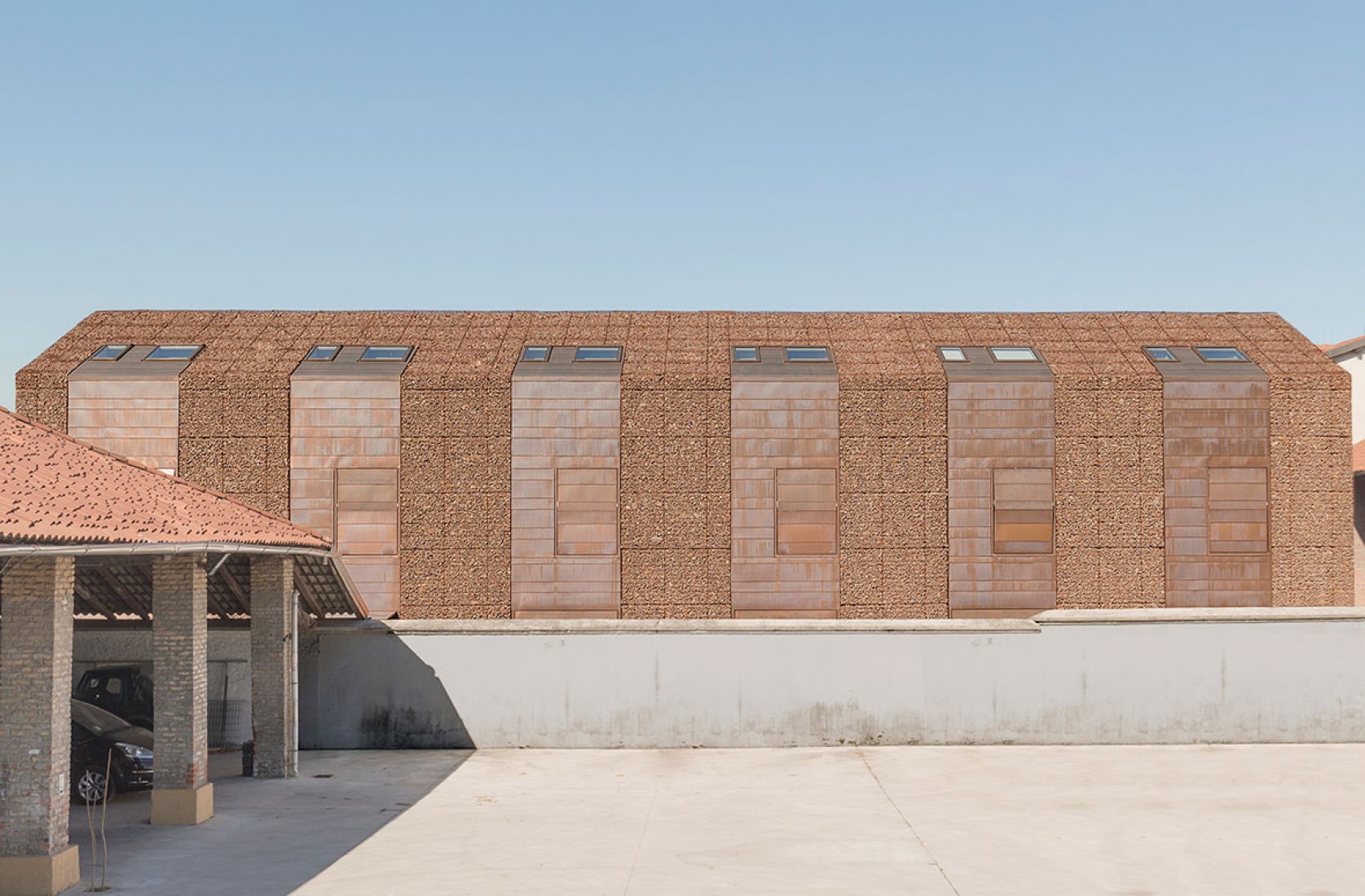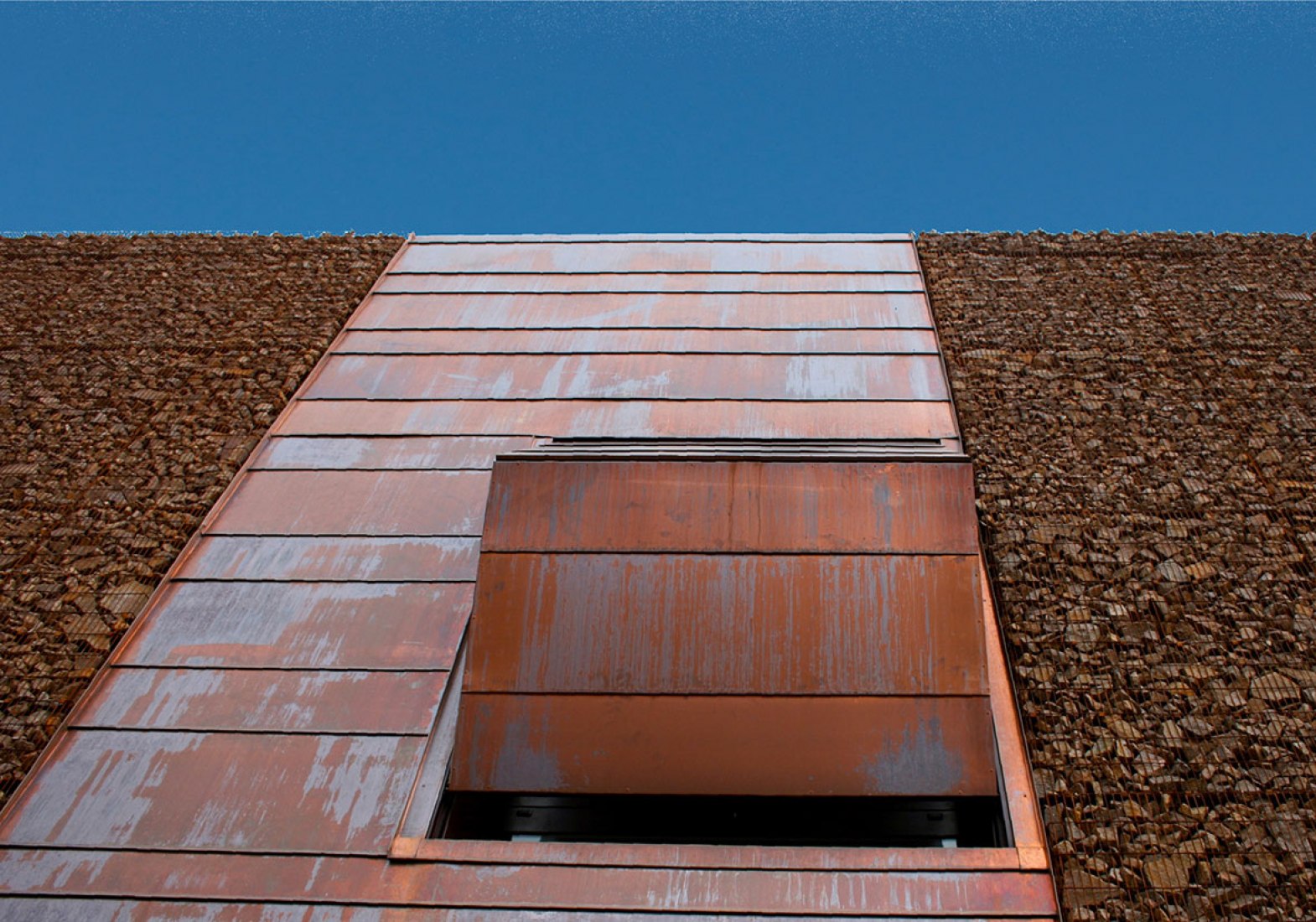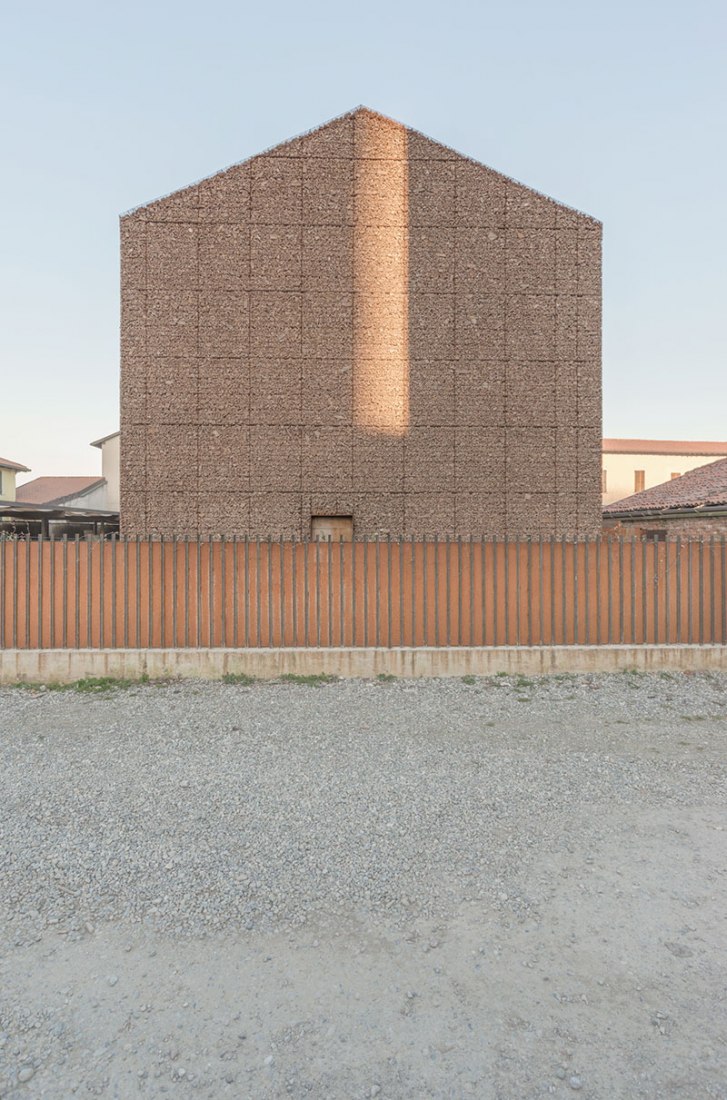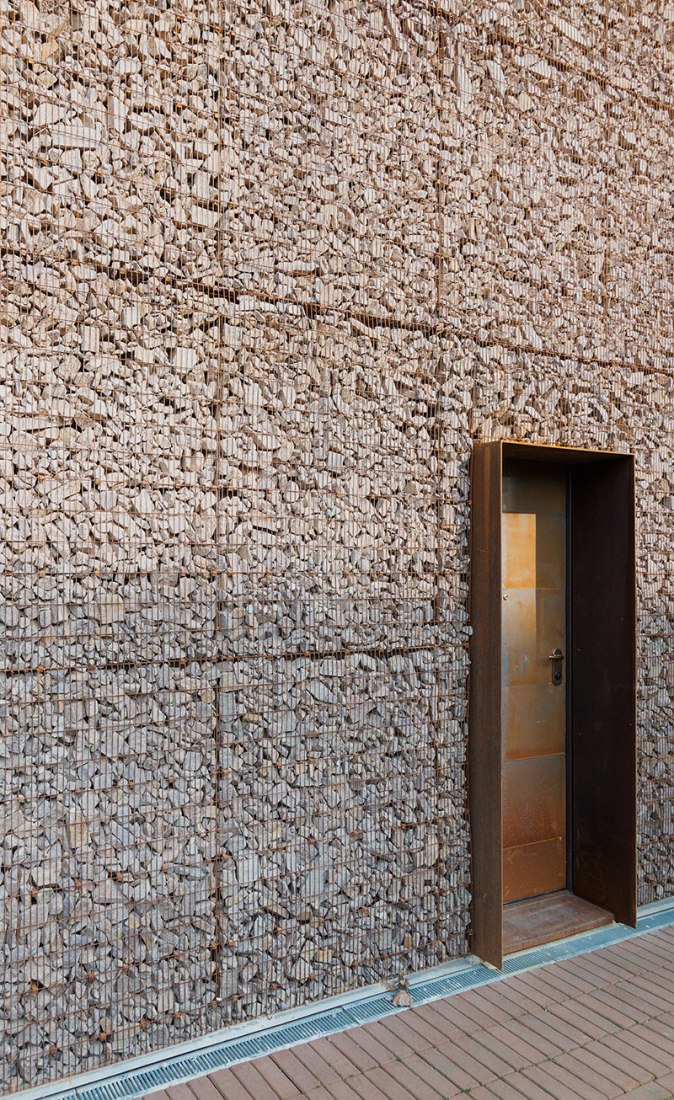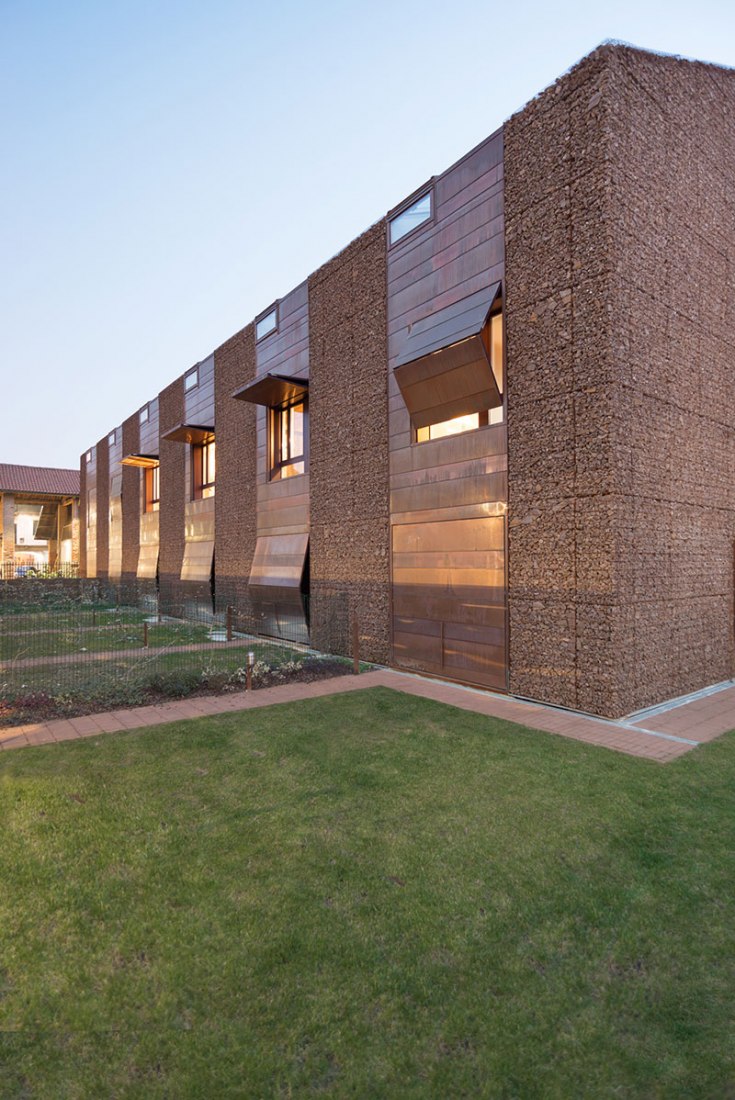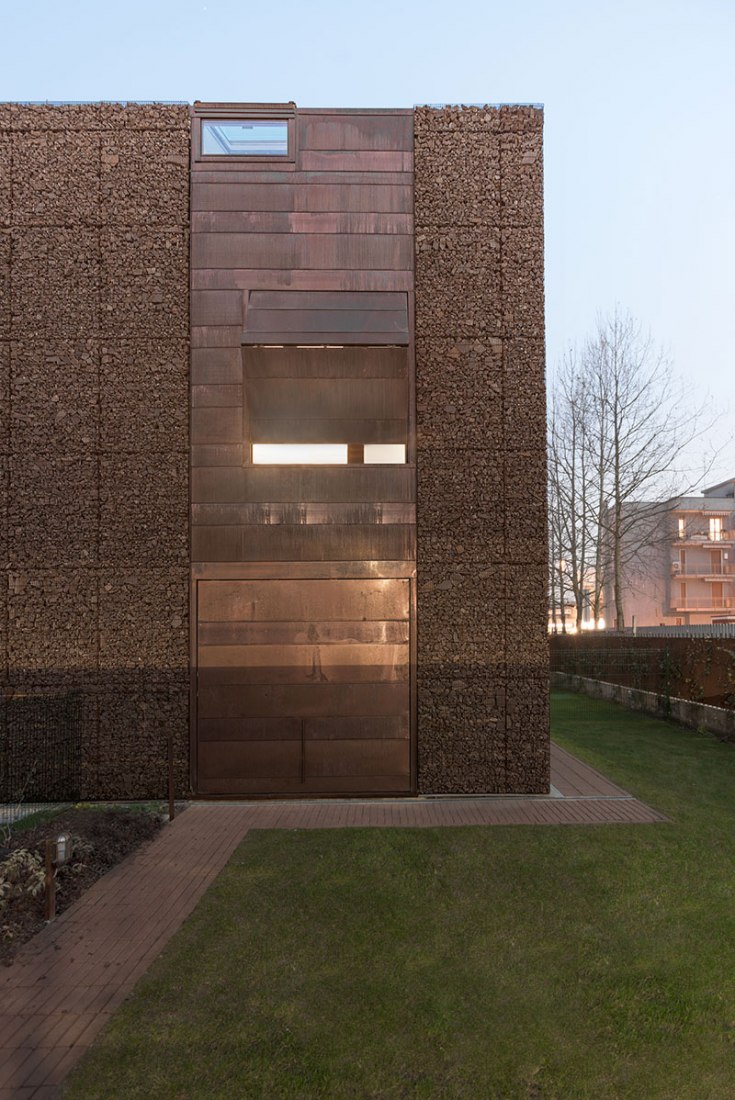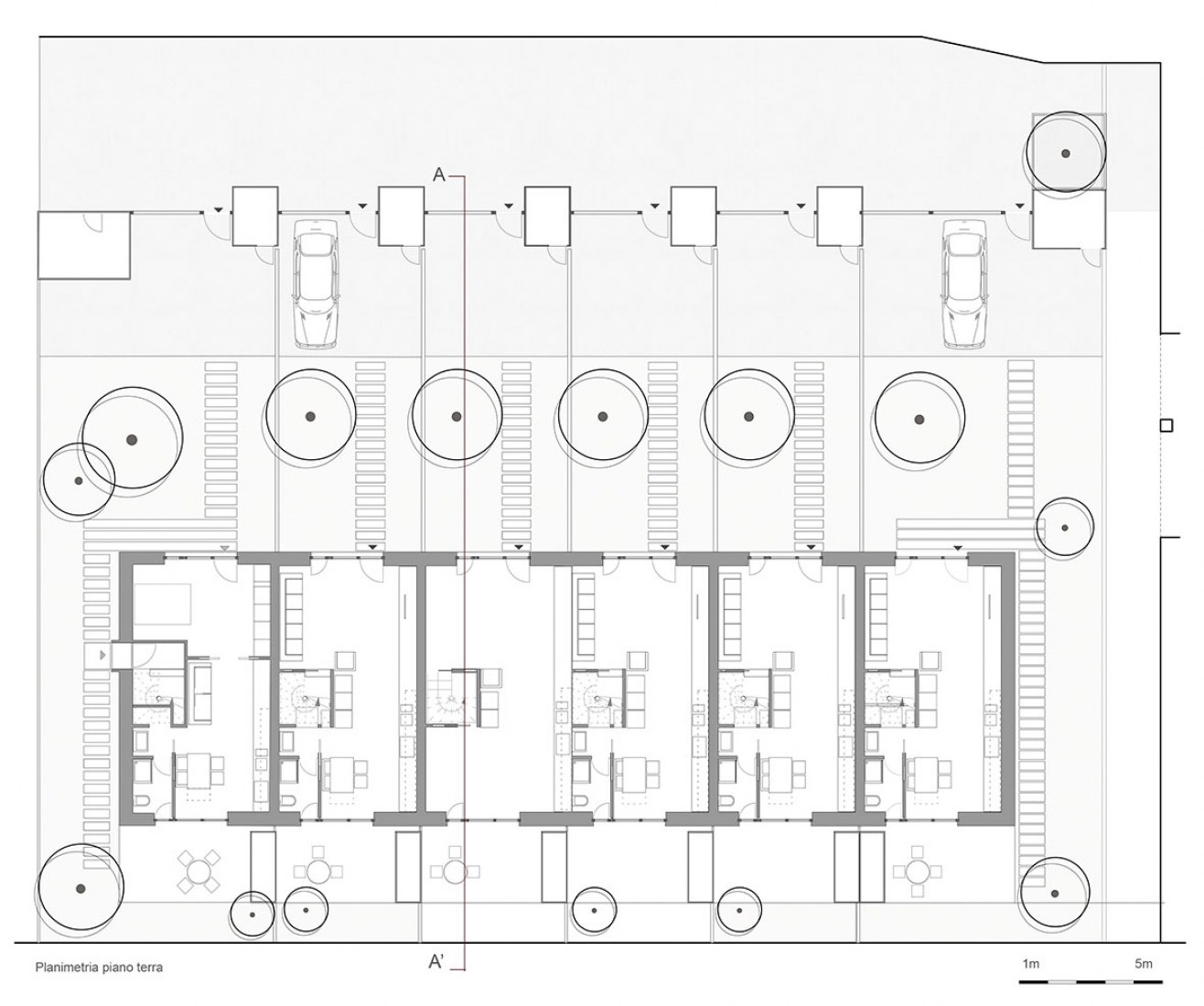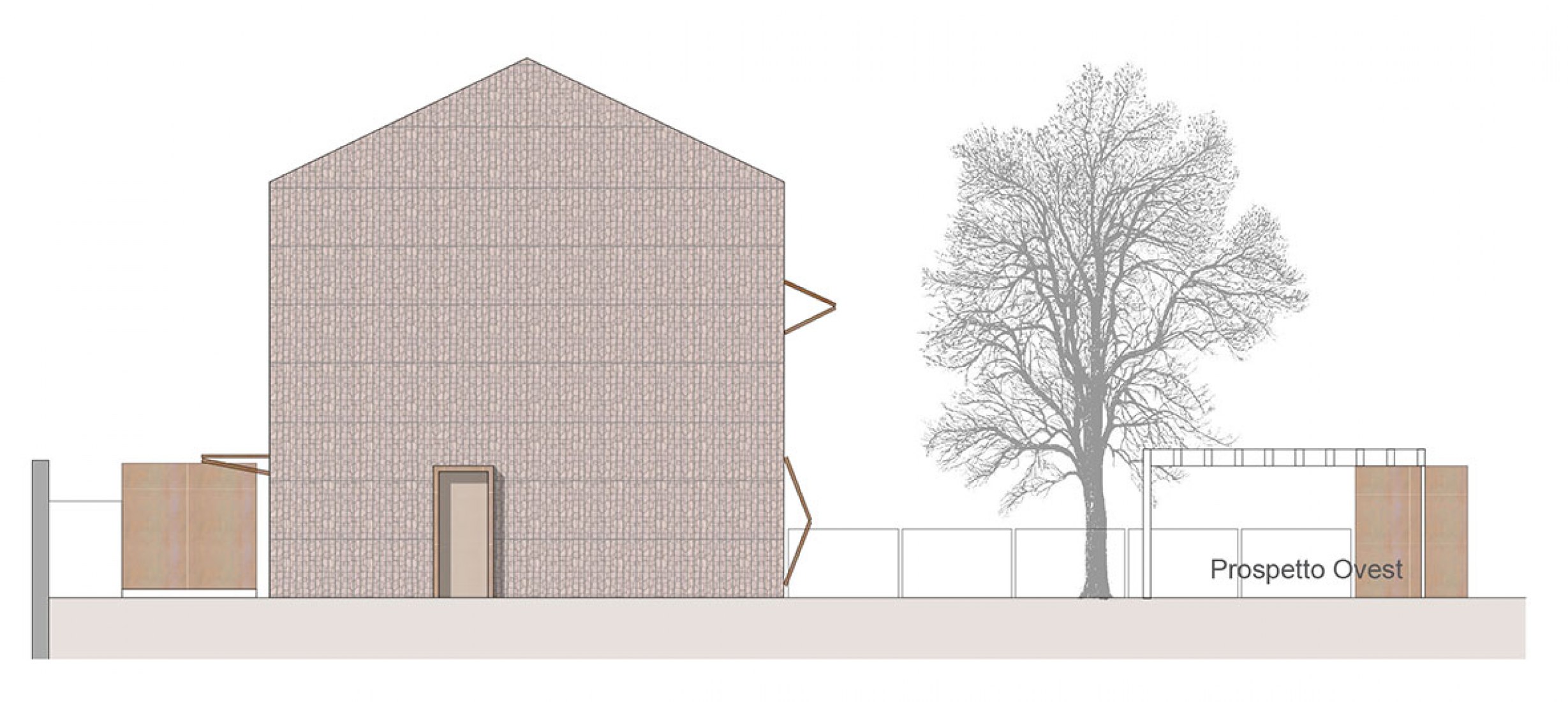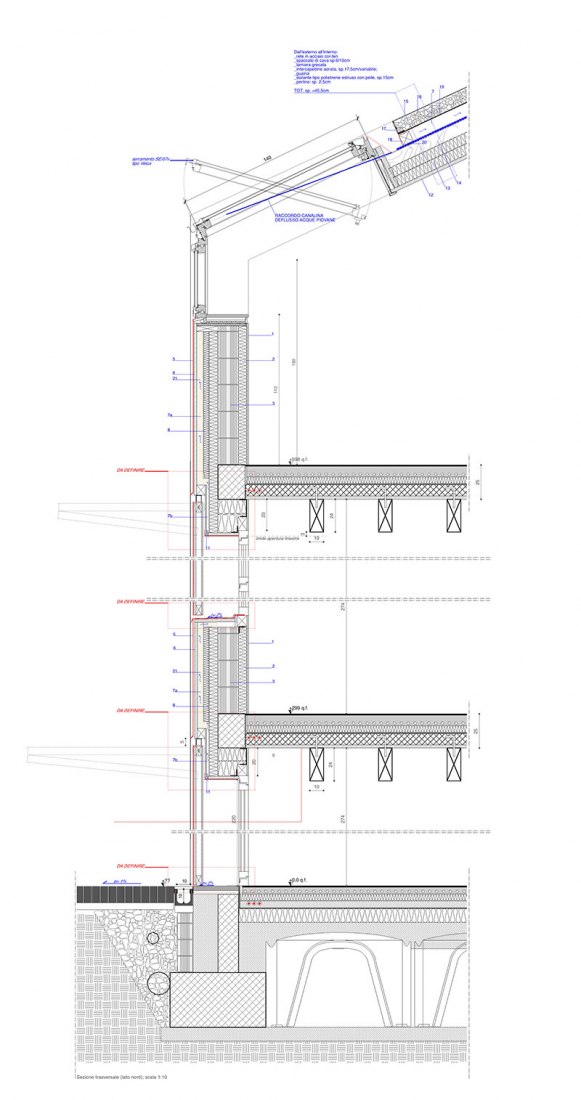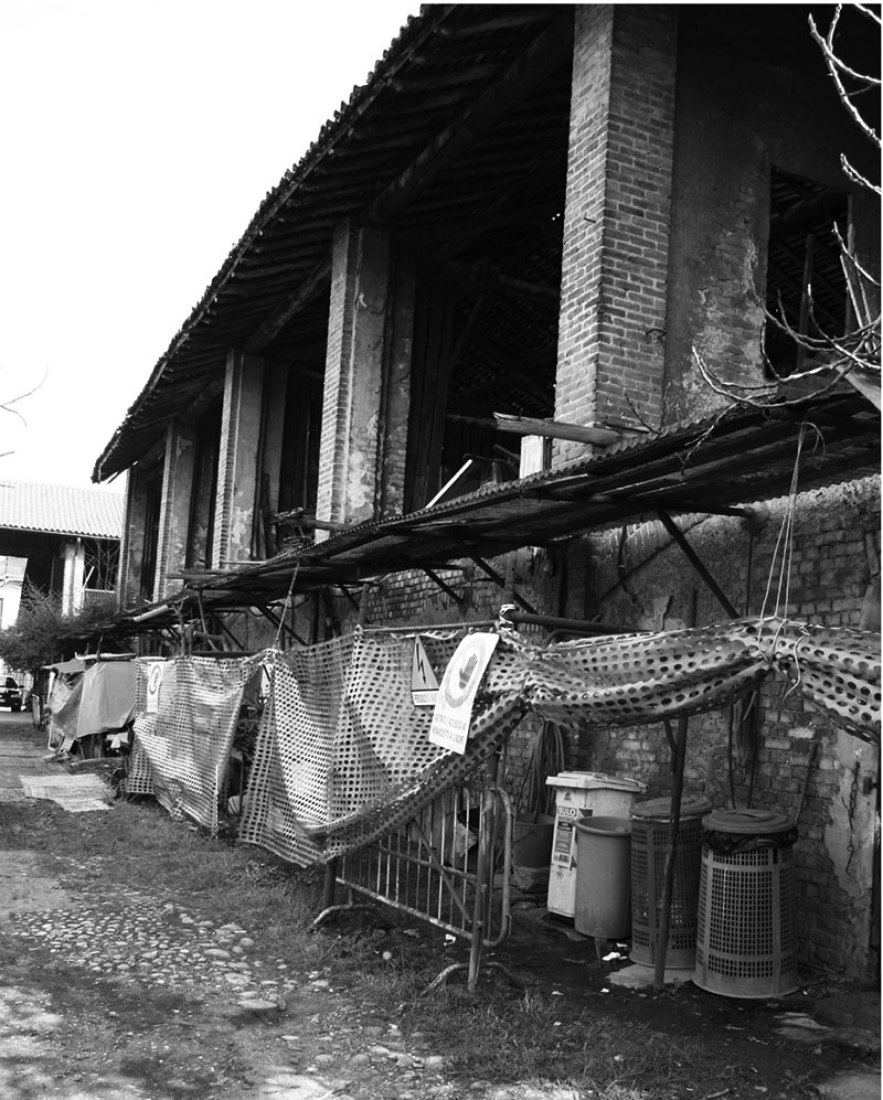The project carried out by Gino Guarnieri and Roberto Mascazzini has the characteristic element reuse of demolition rubble of the original building as rubble to fill the walls facade copper mesh gabions. The façades are unified by these walls and the openings are blocked by aluminium woodwork. Receiving systems rainwater are hidden behind these walls facade and collected at the base of the building. The building not have a fireplace and emits no residues, heated floors being fed by a heat pump.
Description of the project by Gino Guarnieri and Roberto Mascazzini
It's 'possible to imagine a' architecture, while integrating the layered historical context, avoiding additional consumption of soil, retaining profiles and synergies, can take its place in its own right in his time and be an expression of modernity?
It's 'more respectful of history and places a building that mimics type and architectural styles, using techniques and 'shiny' materials, or even reuse unpredictably parties that there were and remain there?
We then worked on the casing, imagined that some of the materials resulting from demolition, the solid brick of the walls and floors of porphyry cobblestones of some, could have new life, so as to enclose the new building within a housing "historic" . The building in the same place, with the same size and shape and even the same material, reassembled outside.
The lot for which the intervention is located on the edge of a village of ancient rural training, now incorporated in the suburbs of Sesto San Giovanni.
The settlement today presents a very complex morphology, buildings of different typologies collected in short succession and connected by covered walkways and porches, all around, the residential neighborhoods built since the early 70 densely populated and major road infrastructures . The campaign to which belonged the ancient village no longer exists, as well as the activities that in the past were held inside.
Regulations and strict building regulations stipulate premises and size, imposing morphology and relationship with the building.
The project action that follows, always hovering on the thread that unites architectural and real estate profit quality, is to establish a continuity of relationships with the previous artifact (a barn to total collapse), with the volumes and the courts of the ancient village.
This means maintaining the shape and size of the pre-existence (yes established by the legislation, but now used entirely for the project) and the recovery of part of the building materials that constituted it. The crushed material and content in a thickness of a few centimeters, held in place by a metal net of Corten steel and uniformly distributed in the cover and walls, thus constitutes a sort of "legacy" aesthetic and constructive, despite the transformation to which it was subjected.
The volume that results is compact, almost single material, divided into symmetrical copper backgrounds crimped in which are formed all the openings of housing, in-line six units on three levels. The openings do not compromise the integrity and strength of the building, they are hidden by shutters that open mechanically and also serve as shelter against sun and rain. The bands continue up to the gutter line risvoltando partially on groundwater, integrating the zenith openings.
The particular construction technique has allowed the elimination of the usual constructive elements: channels, downspouts, window sills, trims, shutters, giving simple construction and safeguarding the clean lines.
The legacy of recycled materials is now an integral part of a housing oriented reducing energy consumption through efficient materials, ventilated air space and especially the formation of a "mass" slow as the heating of the interior as much as possible in the summer season and that preserves as much heat as possible in the winter.
The building has no flue and does not emit waste resulting from combustion processes. Cooling and heating are guaranteed by radial panels integrated in wooden floors, with energy supplied by heat pumps. The rainwater flows along the corrugated sheets under the crushed layer is collected at the foot of the building and coinvogliata in tanks and used for irrigation. Construction technique and materials used substantially eliminate the interventions related to the building envelope maintenance. The ground layer protects from the sun's rays continuous and ventilated aluminum cladding.

